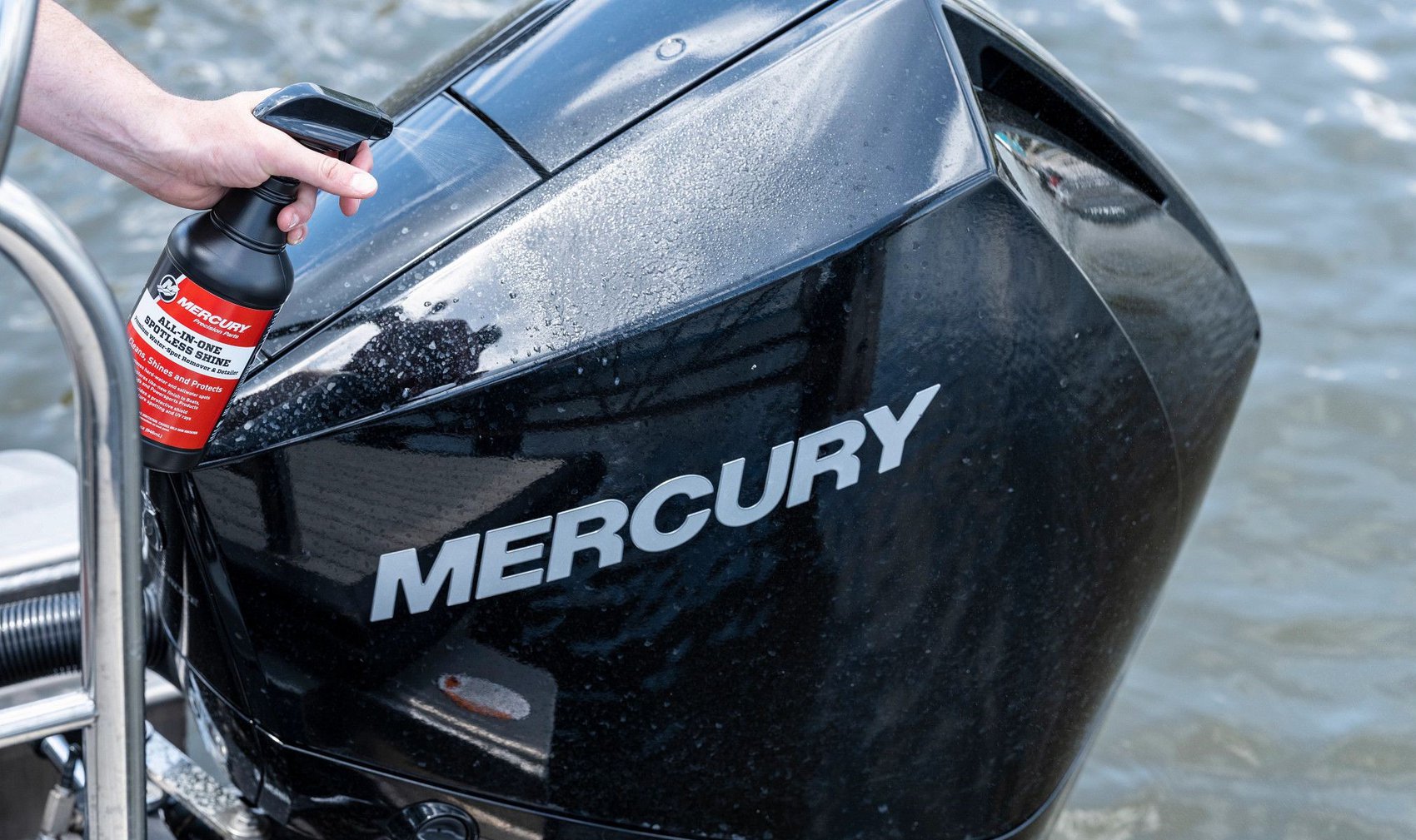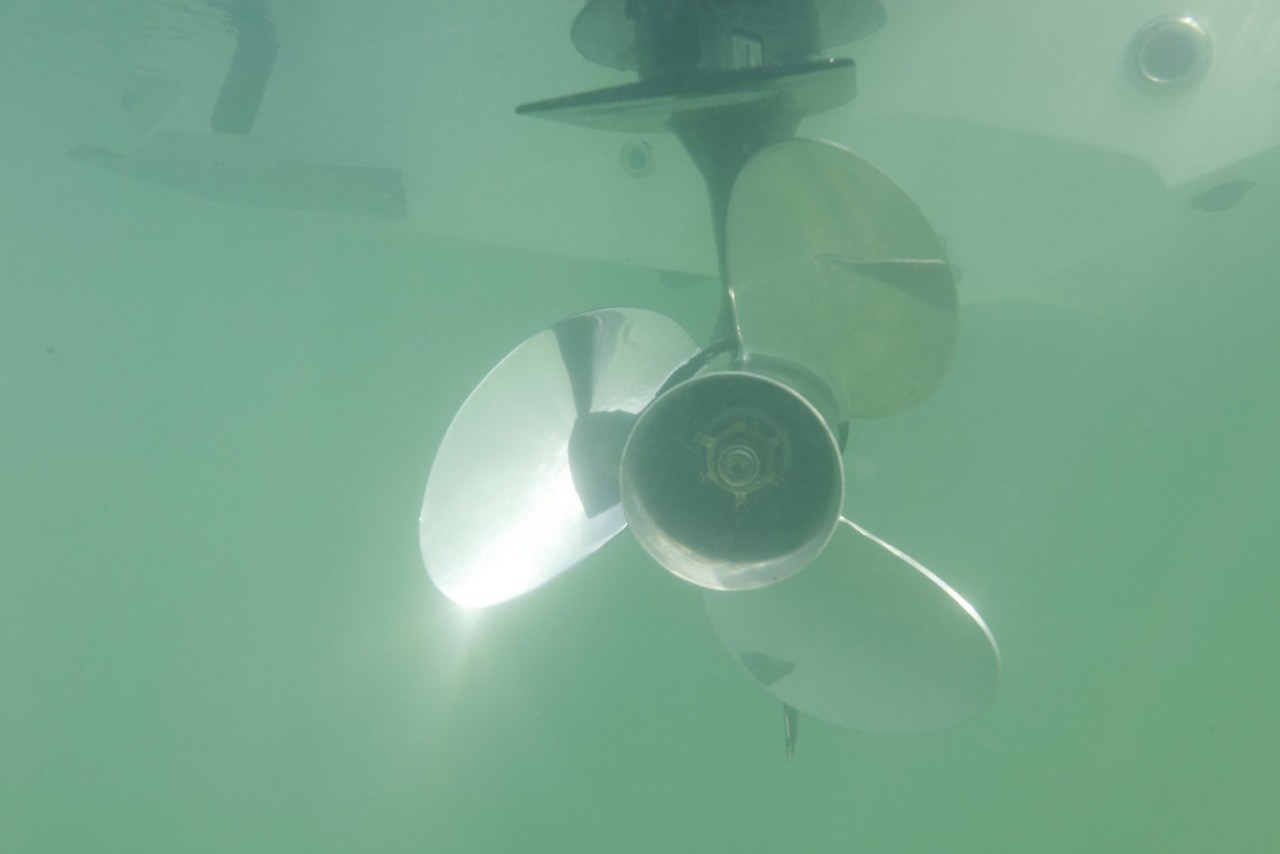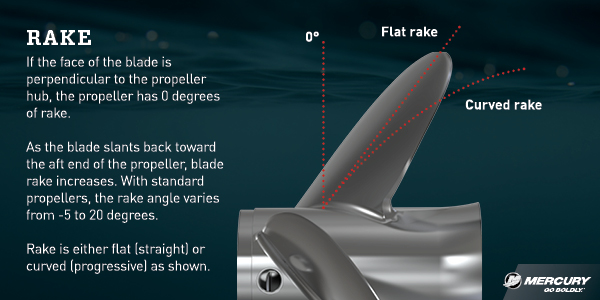One key prop dimension is blade rake. In technical terms, rake is the angle of a propeller blade relative to its hub when viewed from the side. If the blade is perpendicular to the propeller hub, like the blades of a window fan or a giant wind turbine, the propeller has 0 degrees of rake. If the blade slants back it has rake, which is expressed in the degrees of that angle relative to the prop hub.
The Effects of Rake
Mercury propellers designed for lower-horsepower outboard and sterndrive applications, like the aluminum Black Max® and stainless-steel Vengeance® models, have about 15 degrees of rake. These props are designed to operate fully submerged in the water and offer good, all-around performance. An extreme example is the Black Max® Kicker prop designed for Mercury ProKicker outboards, which has a minimal amount of rake and is designed to deliver outstanding thrust in low-speed trolling situations.
High-performance props may have as much as 30 degrees of rake. More rake generally enhances propeller performance when the blades break the water surface, for example on a bass boat with an outboard mounted on a jack plate that’s also run at a high trim angle, or a performance boat with a sterndrive mounted high on the transom to reduce drag. In these situations, a prop with more rake, like the stainless-steel Mercury Fury® and Tempest® Plus models, can better hold the water as it’s being thrown into the air and produce more thrust than a prop with flatter rake.
On lighter, faster boats a prop with more rake will often lift the bow higher, reducing drag and increasing top speed because less hull is in the water. However, a high-rake prop may cause too much bow lift and instability on a hull that naturally carries its bow high at speed.
Rake is just one of many elements considered by Mercury prop engineers when designing a propeller model for a specific application. Boat speed and boat type are two factors utilized by the Mercury Prop Selector Tool, a great resource that will help you narrow down prop options by answering five basic questions about your boat and engine, and the ways you use them.
*Due to the complexity and variations of propeller blade rake, Mercury Marine does not publish rake angles of its propellers.





